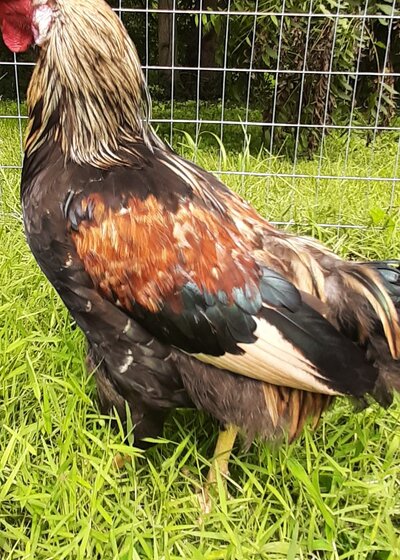Do you mind explaining what the leakage on them is? Like I said I'm new to understanding all the genetics behind coloring. I used that term in explaining the blue with red coloring because someone else had described the coloring as that, but I might have been using that term wrong. I do know Whiting True Blues can come in any color or pattern & that's why I like them for the color variety. I read others experiences where their roos combs were flopping at a young age but by a year old they stood back up like they "grew" into them. My roos are only 19 weeks old so they might grow into them? Is it considered a fault for them to be floppy, even if you're not planning on showing? I wanted a blue layer breed & this breed peaked my interest as opposed to Ameraucanas because they are prolific layers & are also homozygous for the blue egg gene whereas you have to be so careful about getting a true Ameraucana that is actually homozygous.
Leakage is colors like the red on them which doesn't belong to the ground color. It's going to be difficult or impossible to get birds that don't have red leakage, and may get even worse.
Combs that flop over are widely considered undesirable, however there's at least one breed out there that permits it on the basis they can't fix it.
On the Ameraucana, it sounds like you were thinking of Easter Eggers? The truth is that real Ameraucana breed true for Blue eggs, they have 2 copies of the blue egg gene. WTB as a newer, not-yet-a-breed still have some trouble with egg color. 1 blue egg gene is all it takes to see a blue egg, but 2 copies of the gene usually means a bluer egg.
The main selling point for the WTB seems to be the rate of lay, probably achieved by a lack of broodiness. My Ameraucana are everyday layers when they're not broody, which can happen too often.
So, it's understandable if that's what you chose WTB for, but there are a lot of aspects to them that still need work... frankly, so much work that you would save significant time, effort, and funds by just sourcing a new roo.




